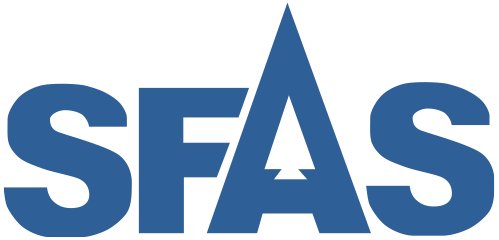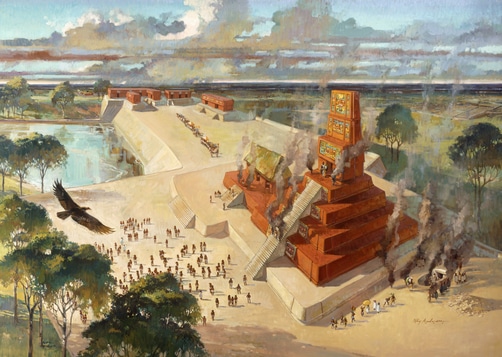Archaeology and Conservation: The Tombs at Río Azul, a treasure in northeast Guatemala – LIWY GRAZIOSO SIERRA
Río Azul is an ancient Maya city located in NE Peten in Guatemala. In the late 70’s the site was heavy looted and artifacts were being sold at the auction market around the world. In the 80’s an Archaeological Project took place and they documented all the looter’s excavations and the tombs they have emptied, most of them have beautiful mural painting. The site gained notoriety and became quite famous. At the end of the project, they were closed for protection and with time they got forgotten. In the late 90’s they were opened to take pictures to promote tourism and they became a target destination and tourists insisted on going in although the site wasn’t open to the public and have no conditions to handle visitors. At that time there was no control and no protection, people went in and out without care and with time the murals were severely damaged.
It was until 2003, when we visited Río Azul, looking for the possibility to start anew research project in the area, that we found out the tombs were opened and after seeing their condition it was clear we must do something about it.
Therefore, in 2004 during PABA’s first season (PABA = Proyecto Arqueológico del Bajo Azúcar/Bajo Azucar Archaeological Project) we evaluated the condition of the site to propose a conservation program and we created PITRA (Programa de Intervenciones de las Tumbas de Río Azul/Tomb’s Intervention Programme at Río Azul). We raised the fundings to start dealing with the site’s deterioration. and we began to sanitize them, free them from the disturbing fauna that have made the tombs their home and make the chambers and features stable. We
did restoration work for several seasons combining research with conservation and in the process we ran into many interesting features that were not seen before, it allowed us to know more about their construction techniques.
All the Río Azul tombs are different and most of them have beautiful paintings with very interesting iconography. We will present the work we have done in 3 of the tombs, how they were constructed, its mural paintings and special features. We must be aware that cultural heritage is a nonrenewable resource, once it’s destroyed it’s lost forever, and we must take responsibility and try to protect and
preserve cultural heritage for generations to come.
LIWY GRAZIOSO SIERRA
Current Director and Curator of Museo Miraflores in Guatemala City and Professor of Maya Archaeology and Iconography at San Carlos University, Guatemala.
Got her degree in Archaeology at the National School of Anthropology and History (ENAH) Mexico, Master in Mesoamerican Studies by the Universidad Nacional Autónoma de México.
Former coordinator of the Restructuring Project of the National Museum of Anthropology MNA-INAH, in Mexico City (1997-2000). Professor of Maya Archaeology in the National School of Anthropology and History (ENAH) in Mexico, from 1997 to 2008, and Professor of Precolumbiar Art & Iconography in the PhD Program in Art History at Benemérita Universidad Autónoma de Puebla and Universidad Autónoma de México (Esthetic’s Research Institute/Instituto de Investigaciones Estéticas, IIE-UNAM) from 2005 to 2008.
Since 2004 directs the Research and Conservation Project PABA-PITRA (Bajo Azúcar Archaeological Project PABA and the Río Azul Tombs Intervention & Conservation Program PITRA).
Has conducted field research in Mesoamerica for more than 30 years at
archaeological sites including Yaxchilan, Izapa, Malinalco, and Teotihuacan in Mexico; La Milpa and the Three Rivers Region in Belize; Takalik Abaj, Kaminaljuyu, Kinal, Río Azul, and Tikal, among others in Guatemala. Has taken part in scientific documentaries (produced by France, UK, Ireland, EUA, Mexico and Guatemala), also has participated in national and international exhibits and in catalogues and exhibition’s guides. Has more than 60 publications primarily
concerning Mesoamerica and the Maya.
Among awards and distinctions she has received The Order of Academic Palms (Ordre des Palmes Académiques) as Knight (Chevalier), bestowed by the French Republic in May 2019, French Embassy in Guatemala, and Recipient of the Ambassadors Fund for Cultural Preservation (AFCP-2009), given by the United States of America’s State Department (Grant S-GT500-09-GR049) 2009-2010,
US Embassy in Guatemala. Since 2015 she has been a member of Seminario
de Cultura Mexicana (Corresponsalía Guatemala), President of Guatemala’s Museum Association (2017-2019) and President of the International Council of Museums ICOM-Guatemala (2017-2019).
Areas of interest: Mesoamerican Archaeology, Protection and Conservation of Cultural Heritage, Iconography, Spatial Analysis, Hydraulic Systems, Museums and Collections.
Professional Memberships, Academic Institutions
AGARQ Asociación Guatemalteca de Arqueología
AMG Asociación de Museos de Guatemala (President 2017-2019)
Asociación para la Conservación del Patrimonio Cultural de las Américas, E.U.A.
Asociación Tikal, Guatemala (Member of the Board of Directors)
Colegio de Arqueólogos de México A. C., (Founding Member) Founded in Mexico City.
Colegio de Humanidades de Guatemala (Colegiado No.8,636)
ICOM International Council of Museums (Presidente de ICOM-Guatemala 2017-2019)
ICOMOS International Council of Monuments and Sites
Museo Miraflores, Guatemala City (Director and Curator 2012 to date)
SAA Society for American Archaeology, E.U.A
SCM Seminario de Cultura Mexicana, Corresponsalía de Guatemala
USAC Universidad de San Carlos de Guatemala (Professor since 2009).
Recent Publications:
2022 “Harvesting Ha, Ancient Water Collection and Storage in the Elevated Interior Region of the Maya Lowlands”, with N. Dunning, J. Brewer, C. Carr, A. Anaya Hernández, T. Beach, J. Chmilar, R. Griffin, D. Lentz, S. Luzzadder-Beach, K.Reese-Taylor, W. Saturno, V. Scarborough, M. Smyth and F. Valdez Jr. In Sustainability and Water Management in the Maya World and Beyond, Edited by Jean
T. Larmon, Lisa Lucero and Fred Valdez Jr. pp.13-51, University Press of Colorado, USA.
2022 “Interpreting Đ13c Values Obtained on Soil Organic Matter from Ancient Maya Reservoirs and Depressions”, with Kenneth B. Tankersley, Nicholas P. Dunning, David L. Lentz, Christopher Carr, Trinity L. Hamilton and Kathryn ReeseTaylor. In SSRN Electronic Journal, DOI: 10.2139/ssrn.4067202, USA.
2021 “Environmental DNA reveals arboreal cityscapes at the ancient Maya Center of Tikal”, with David L. Lentz, Trinity L. Hamilton, Nicholas P. Dunning, Eric J. Tepe, Vernon L. Scarborough, Stephanie A. Meyers and Alison A. Weiss. In Scientific Reports, Vol 11, 12725 (2021) USA.
2021 “El Agua nos habla de la gente, nos cuenta su historia: Tikal y sus
reservorios.” with Nicholas Dunning, David Lentz, Kenneth Tankersley y Vernon Scarborough, in XXXIV Simposio de Investigaciones Arqueológicas en Guatemala, edited by B. Arroyo, G. Ajú y L. Méndez Salinas, Tomo 1: 201-212, MICUDE, IDAEH and Asociación Tikal, Guatemala.
2020 “Molecular genetic and geochemical assays reveal severe contamination of drinking water reservoirs at the ancient Maya city of Tikal”, with David L. Lentz, Trinity L. Hamilton, Nicholas P. Dunning, Vernon L. Scarborough, Todd P. Luxton, Anne Vonderheide, Eric J. Tepe1 and Cory J. Perfetta. In Nature Research Scientific
Reports, Vol.10, article number 10316 (2020), USA.

